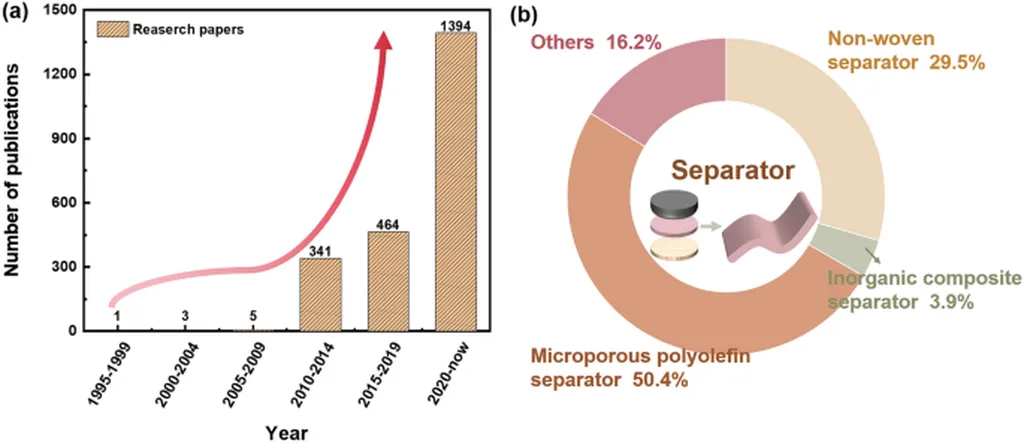In a groundbreaking development poised to shake up the energy storage sector, researchers have unveiled a novel approach to designing battery separators that could slash production costs and boost performance. The study, led by Shuo Qin from the College of Chemistry and Material Science at Shandong Agriculture University, introduces a nanocrack-structured separator that promises to revolutionize lithium-ion battery technology.
The separator, a critical component in batteries, ensures ion transport while preventing short circuits between electrodes. Traditionally, separators are produced using either dry or wet methods, both of which come with significant drawbacks. Wet processes, while offering controllable pore size distribution, are energy-intensive and complex, requiring extensive use of organic solvents. Dry processes, on the other hand, demand high-quality raw materials and involve intricate production steps, driving up costs and complexity.
Qin’s team has circumvented these issues by leveraging the principle of similar compatibility. By blending poly(butylene adipate-co-terephthalate) (PBAT) and isotactic polypropylene (IPP), which have poor compatibility, they created a separator with uniform microphase separation. This innovative approach, achieved through a simple and mature blow molding process, eliminates the need for a pore-making step, significantly reducing energy consumption and production costs.
“The abundant nanocracks at the polymer interfaces maintain sufficient ion transport flux for normal charge-discharge processes,” explains Qin. “This method enhances production efficiency while reducing energy consumption, making it a game-changer for the industry.”
The new separator demonstrates impressive mechanical properties, with transverse and longitudinal ultimate tensile strengths of 7.52 MPa and 21.74 MPa, respectively, and strains reaching 392.41% and 597.58%. When assembled into Li//LiFePO4 batteries, the battery delivers an initial discharge capacity of 155.99 mA·h·g−1 at a current density of 0.1 C, with 92.9% capacity retention after 100 cycles.
The implications for the energy sector are profound. By eliminating the pore-forming step typical in traditional separator preparation, this research achieves dual benefits of reduced energy consumption and environmental protection. The innovative use of nanocrack structures for ion transport opens new avenues in electrochemical energy storage, providing novel insights for advancing battery separator fabrication technologies.
“This study not only addresses the bottlenecks in the domestic high-end separator market but also paves the way for large-scale production of high-performance separators,” says Qin. “It’s a significant step forward in our quest for more efficient and sustainable energy storage solutions.”
Published in the Journal of Engineering Science, this research is set to shape future developments in the field, offering a compelling solution to the challenges faced by the energy storage industry. As the world continues to demand more from its energy systems, innovations like these will be crucial in meeting those needs sustainably and efficiently.

